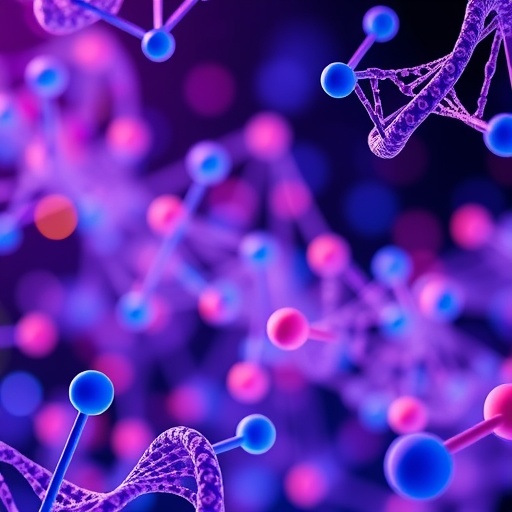In a remarkable leap forward for pediatric oncology, a team of researchers has harnessed the power of machine learning to uncover novel prognostic biomarkers in neuroblastoma, one of the deadliest childhood cancers. This breakthrough study, recently published in Pediatric Discovery, delivers a comprehensive gene expression landscape that promises to transform how clinicians predict disease progression and tailor treatments for this complex malignancy.
Neuroblastoma, originating from immature nerve cells, predominantly affects infants and young children. Despite advances in surgical techniques, chemotherapy regimens, and stem cell therapies, the prognosis for high-risk neuroblastoma remains grim, with survival rates stubbornly below 60%. This dismal outlook stems in part from the tumor’s notorious heterogeneity and the current scarcity of reliable biomarkers that can stratify patients effectively, guiding precision therapies.
Traditional molecular markers such as MYCN amplification and ALK mutations, while clinically informative, cover only subsets of patients and often require intricate or expensive testing methodologies. These limitations have spurred an urgent quest for more universally applicable and interpretable prognostic signatures. The recent study answers this call by integrating vast sequencing datasets with cutting-edge computational approaches, revealing a richer molecular tapestry of neuroblastoma.
At the heart of this research is an enhanced spatial temporal Support Vector Machine (stSVM) algorithm, adeptly applied to bulk RNA sequencing (RNA-seq) data from over 1,200 neuroblastoma patients. This machine learning model sifted through thousands of gene expression profiles to identify 528 genes tightly correlated with patient survival outcomes. This expansive gene set offers a panoramic view of the genetic drivers underlying disease aggressiveness.
To distill actionable biomarkers from this extensive gene pool, the team employed Weighted Gene Co-expression Network Analysis (WGCNA), a method that elucidates patterns of gene co-regulation and pinpoints central “hub” genes driving network behavior. This refined analysis spotlighted 11 hub genes with outsized influence on neuroblastoma biology: AURKA, BLM, BRCA1, BRCA2, CCNA2, CHEK1, E2F1, MAD2L1, PLK1, RAD51, and notably, RFC3.
Among these, RFC3 emerged as a particularly compelling prognostic marker. Elevated expression of RFC3 was strongly associated with poor patient survival and intriguingly linked to suppressed natural killer (NK) cell activity, suggesting a tumor mechanism of immune evasion. This finding hints that RFC3 might not simply be a bystander gene but an active participant in sculpting the tumor microenvironment to favor cancer progression.
Beyond correlating gene expression with clinical outcomes, the study probed how these hub genes influence responsiveness to chemotherapy drugs routinely used in neuroblastoma treatment. Intriguingly, tumors exhibiting high RFC3 levels demonstrated increased sensitivity to vincristine and cyclophosphamide, two cornerstone agents in pediatric oncology protocols. This dual prognostic and predictive utility positions RFC3 as a potential biomarker to both assess risk and guide therapeutic choices.
To deepen their mechanistic understanding, the researchers also examined single-cell RNA sequencing (scRNA-seq) data, allowing resolution of gene expression at the level of individual tumor and immune cells. This granular analysis confirmed elevated RFC3 expression predominantly in epithelial and myeloid cell subpopulations of patients with poorer survival outcomes. Moreover, these patients exhibited reduced infiltration of CD8+ T cells, another critical component of the anti-tumor immune response. Such immune profiling provides valuable insight into the interplay between tumor genetics and host immunity.
The study’s integrative pipeline—combining machine learning, bulk and single-cell transcriptomics, immune profiling, and co-expression network analysis—exemplifies modern systems biology approaches applied to pediatric cancer research. This multidisciplinary methodology uncovers complex molecular interdependencies that traditional statistical analyses frequently overlook, offering a more holistic view of neuroblastoma pathobiology.
Dr. Yupeng Cun, senior investigator on the project, highlights the transformative potential of this research: “Our comprehensive approach reveals novel biomarkers like RFC3 that not only predict clinical outcomes but also indicate likely responses to standard chemotherapy agents. By fusing computational models with multi-omics data, we uncover molecular patterns that can ultimately enhance patient stratification and individualized treatment.”
These findings mark an important milestone for precision medicine in childhood cancers. As a biomarker, RFC3 stands out for its multifaceted role—informing prognosis, reflecting immune landscape alterations, and hinting at chemotherapy responsiveness. Clinicians in the future could leverage RFC3 expression to identify high-risk neuroblastoma patients early, tailoring treatment intensity and monitoring strategies accordingly to improve survival chances.
Furthermore, the platform developed by this research team could be adapted to other aggressive cancers, expanding its impact beyond neuroblastoma to benefit a broader spectrum of oncologic diseases. Continued work integrating additional omics layers—such as proteomics and epigenomics—and further experimental validation will be vital to translating these insights into clinical tools.
This study underscores the growing importance of artificial intelligence and machine learning technologies in decoding cancer complexity. By revealing genetic architects of neuroblastoma and their relationships with the immune system and drug sensitivity, researchers are stepping closer to conquering a formidable pediatric malignancy that has long evaded definitive prognostic clarity.
As the field progresses, personalized oncology for children with neuroblastoma may soon incorporate biomarkers like RFC3 as routinely measured clinical tools. These advances promise not only improved risk assessment but also more nuanced, effective therapeutic regimens that minimize toxicity and maximize survival—a long-sought goal in pediatric cancer care.
The promise held by such integrative, AI-driven biomarker discovery efforts ignites hope that tailored treatments could markedly improve outcomes, sparing children unnecessary side effects while targeting their tumors with precision. For families confronting neuroblastoma, these advances bring new optimism fueled by the power of genomic medicine and computational innovation.
In sum, this pioneering research not only reveals critical molecular insights but also charts a pragmatic path toward clinical application, heralding a new era of prognostic sophistication and treatment personalization in pediatric neuroblastoma.
Subject of Research:
Not applicable
Article Title:
Identification of Prognostic Biomarkers in Gene Expression Profile of Neuroblastoma Via Machine Learning
News Publication Date:
27-May-2025
Web References:
http://dx.doi.org/10.1002/pdi3.70009
References:
10.1002/pdi3.70009
Image Credits:
Pediatric Discovery
Keywords:
Neuroblastoma, Pediatric Oncology, Machine Learning, Biomarkers, Gene Expression, RFC3, Immune Evasion, Chemotherapy Sensitivity, Single-cell RNA Sequencing, Weighted Gene Co-expression Network Analysis, Precision Medicine




